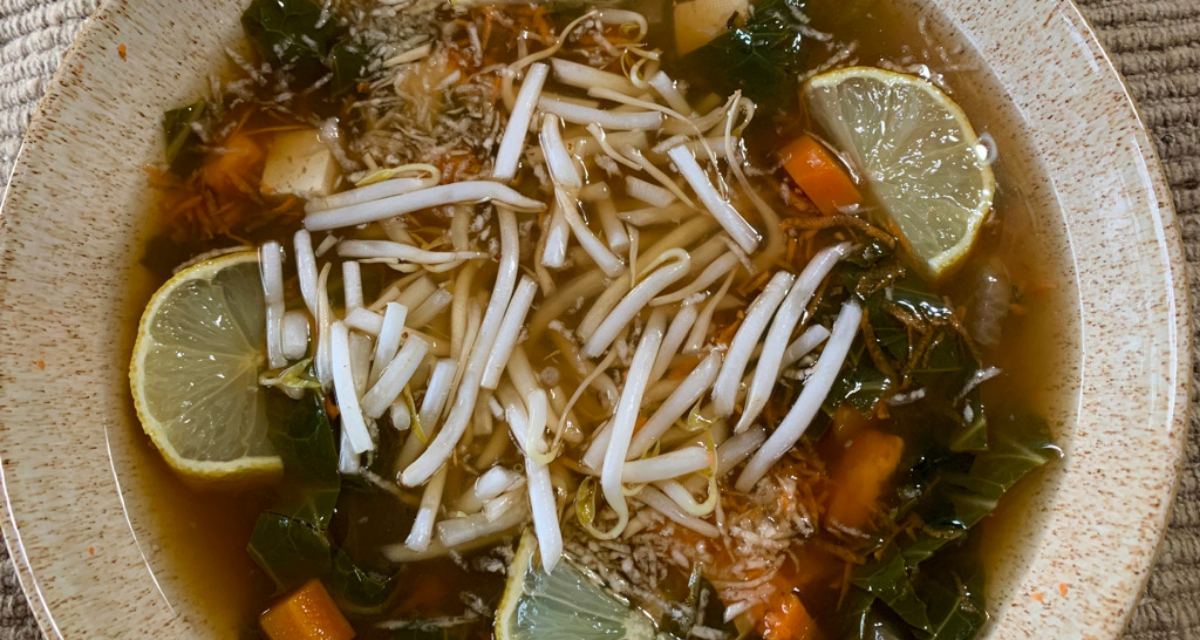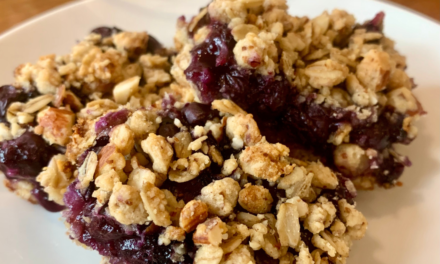Ingredients
| 2-3 cps. Spring Water | Small piece wakame sea vegetable or 1/4 tsp. wakame flakes |
| 1 – 1 ½ cps chopped leafy greens—kale, mustard greens, turnip greens, dandelion, etc. | Mung bean sprouts |
| 2-3 TB. each grated daikon radish and grated carrot | Scallions, leeks or chives (or all of them) |
| 1-2 dried donko shiitake mushroom | Fresh lemon juice OR |
| 1-2 TB. GF Soy sauce or tamari (start with less—don’t make overly salty. ***can substitute miso – ½-1 tsp. per cup of liquid in the soup. | 1-2 tsp. brown rice vinegar or umeboshi vinegar |
Directions
- Reconstitute shiitake (Donko are the most therapeutic) about 20 minutes; slice and discard stem.
- Soak a strip of wakame in room temperature water 3-5 minutes. Remove center rib and discard, and slice wakame if using the strips. If using flakes reconstitute 3-4 minutes.
- Bring water to a boil; add shiitake and the shiitake soaking water being careful not to use any sediment that settles to the bottom. Cover and simmer 15 minutes.
- Add greens and wakame and leeks if you are using them.
- Cover and simmer for 7-8 minutes. Stir in soy sauce. If using miso, add at this point and simmer very gently for 3 minutes. Turn off heat and add grated carrots, grated daikon, mung bean sprouts, and the vinegar or lemon. You can also add fresh chives, watercress or scallions.
This recipe makes a single serving. You can double or triple the recipe.
*** You can use miso in this recipe instead of soy sauce. An excellent quality miso is South River Brand available at Health Food stores in refrigerated section. It is in a glass jar. Any of their varieties are good. Their Dandelion Leek Miso is great for spring. You can also purchase South River Miso online. If the miso is lighter in color, the taste will be milder.
Miso Master is another good brand. It comes refrigerated in a one pound plastic tub. Do not buy the packaged miso that is not refrigerated. Miso keeps indefinitely in the refrigerator. Use rice miso or shiro miso or wild dandelion and leek miso, or red miso.
Miso Benefits
Miso is high protein and contains amino acid patterns similar to meat with a trace of B12; contains lactobacillus which aids digestion and assimilation; creates an alkaline condition in the body and increases resistance to disease; promotes longevity; treats and prevents radiation sickness; treats certain types of heart disease and cancer; neutralizes some of the effects of pollution and smoking. It has many other health benefits.
Miso contains bacteria and enzymes which aid digestion and food assimilation. The lactobacillus fermentation increases the quantity, availability, digestibility and assimilability of nutrients.
Seaweed
Wakame and other Seaweeds are sea plants that contain 10-20x the minerals of land plants and an abundance of vitamins and other elements necessary for metabolism. They remove radioactive and toxic metal wastes from the body. Seaweed softens hardened areas and masses in the body. Seaweed detoxifies, transforms phlegm, is a diuretic, removes residues of radiation in the body, acts as a lymphatic cleaner, improves metabolism, alkalizes the blood, and alleviates liver stagnation. Order Eden Wakame flakes here
Quality matters. I prefer to purchase sea vegetables from a reputable health food store rather than an Asian Market–they often contain chemicals and artificial ingredients.I never purchase, nor do I recommend, sea vegetables from China or Hong Kong. My personal preference is Mitoku, a superior brand. Eden is a good brand too.
Read my blog post, Salt–Friend or Foe to learn more about miso, sea vegetables and other health supportive, mineral-rich foods.





